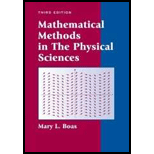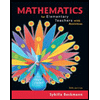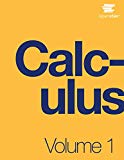
Solve the following differential equations by the method of Frobenius (generalized power series). Remember that the point of doing these problems is to learn about the method (which we will use later), not just to find a solution. You may recognize some series [as we did in (11.6)] or you can check your series by expanding a computer answer.
Want to see the full answer?
Check out a sample textbook solution
Chapter 12 Solutions
Mathematical Methods in the Physical Sciences
Additional Math Textbook Solutions
Introductory Mathematics for Engineering Applications
A Problem Solving Approach to Mathematics for Elementary School Teachers (12th Edition)
Probability and Statistics for Engineers and Scientists
Calculus Volume 1
The Heart of Mathematics: An Invitation to Effective Thinking
Using and Understanding Mathematics: A Quantitative Reasoning Approach (6th Edition)
 Discrete Mathematics and Its Applications ( 8th I...MathISBN:9781259676512Author:Kenneth H RosenPublisher:McGraw-Hill Education
Discrete Mathematics and Its Applications ( 8th I...MathISBN:9781259676512Author:Kenneth H RosenPublisher:McGraw-Hill Education Mathematics for Elementary Teachers with Activiti...MathISBN:9780134392790Author:Beckmann, SybillaPublisher:PEARSON
Mathematics for Elementary Teachers with Activiti...MathISBN:9780134392790Author:Beckmann, SybillaPublisher:PEARSON
 Thinking Mathematically (7th Edition)MathISBN:9780134683713Author:Robert F. BlitzerPublisher:PEARSON
Thinking Mathematically (7th Edition)MathISBN:9780134683713Author:Robert F. BlitzerPublisher:PEARSON Discrete Mathematics With ApplicationsMathISBN:9781337694193Author:EPP, Susanna S.Publisher:Cengage Learning,
Discrete Mathematics With ApplicationsMathISBN:9781337694193Author:EPP, Susanna S.Publisher:Cengage Learning, Pathways To Math Literacy (looseleaf)MathISBN:9781259985607Author:David Sobecki Professor, Brian A. MercerPublisher:McGraw-Hill Education
Pathways To Math Literacy (looseleaf)MathISBN:9781259985607Author:David Sobecki Professor, Brian A. MercerPublisher:McGraw-Hill Education





